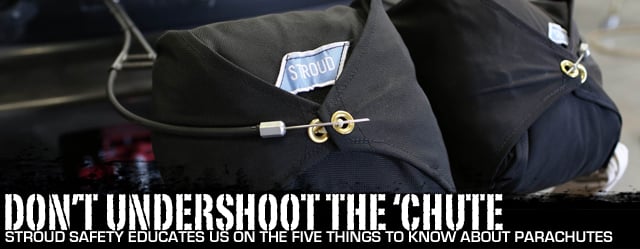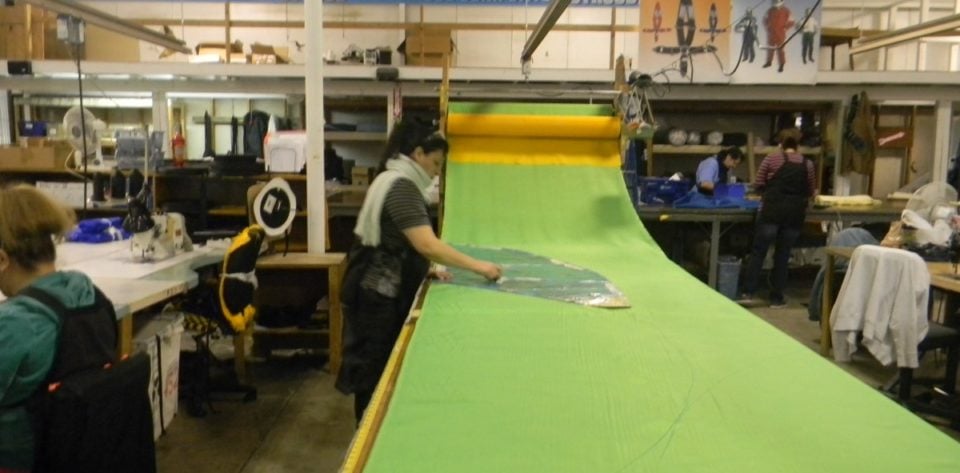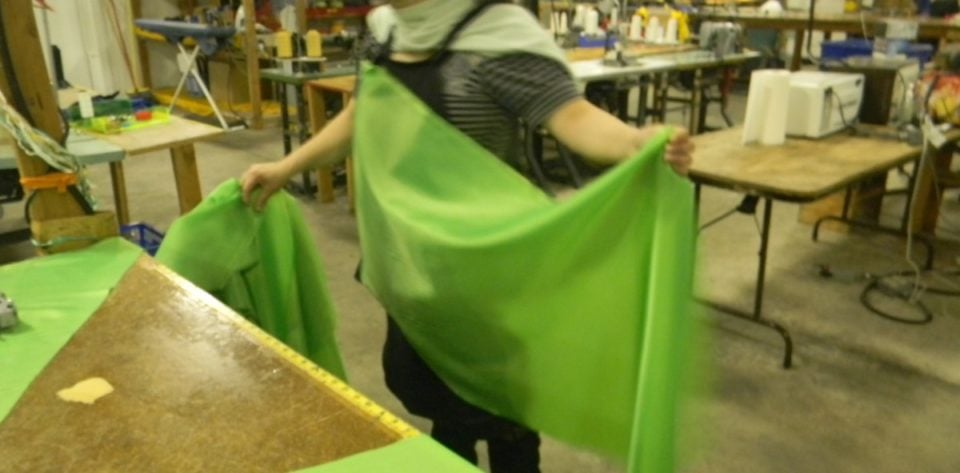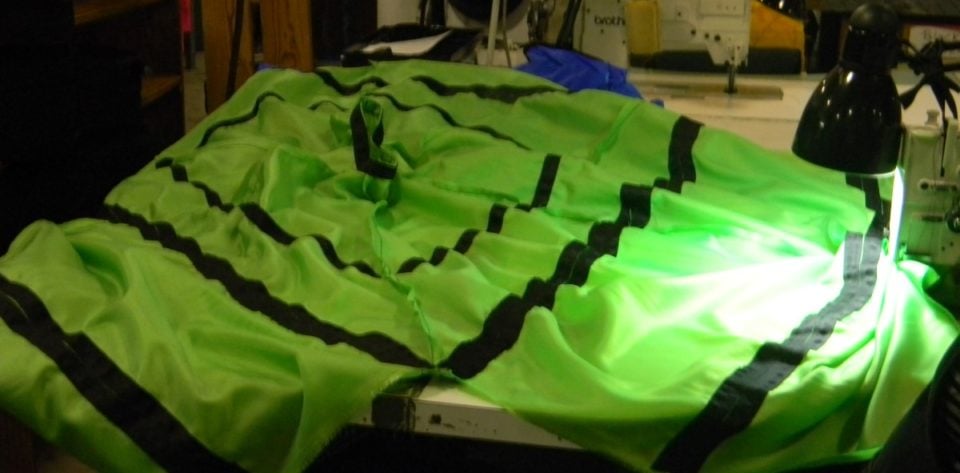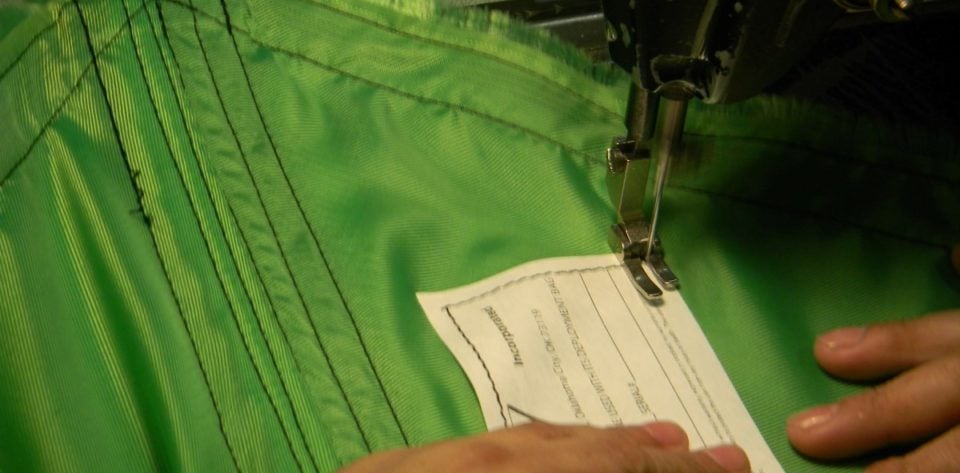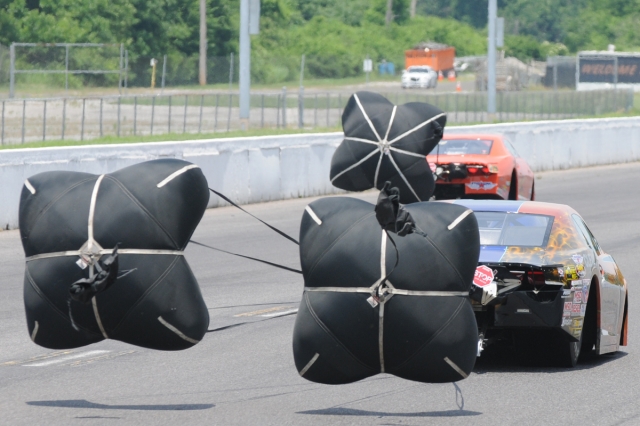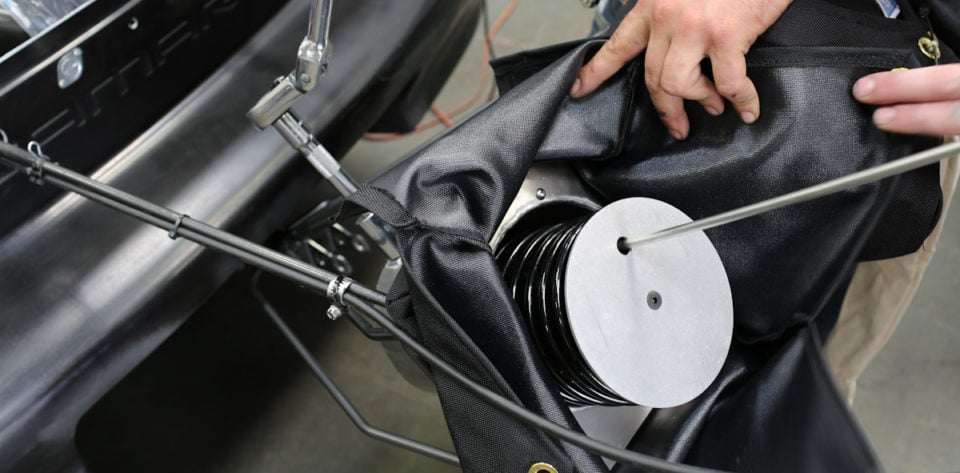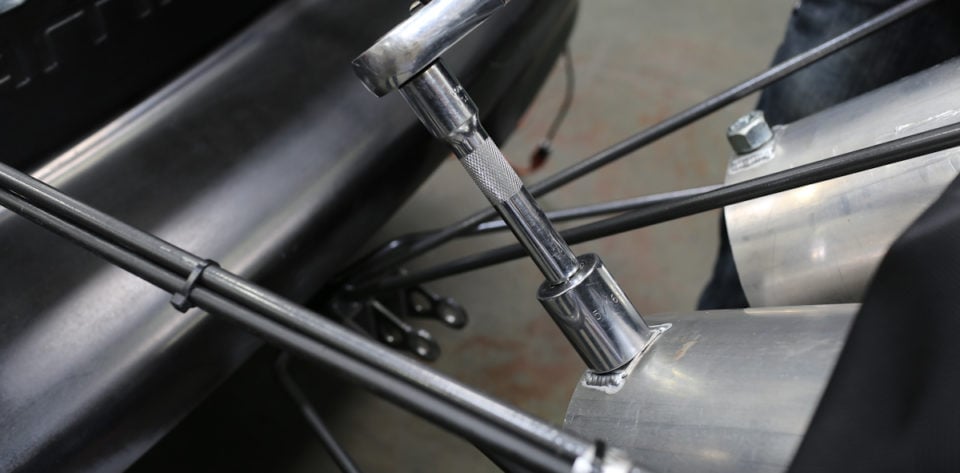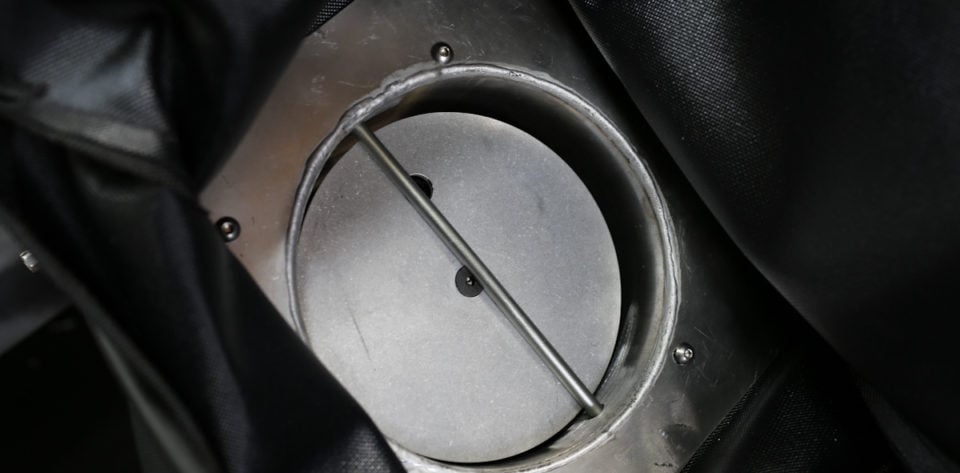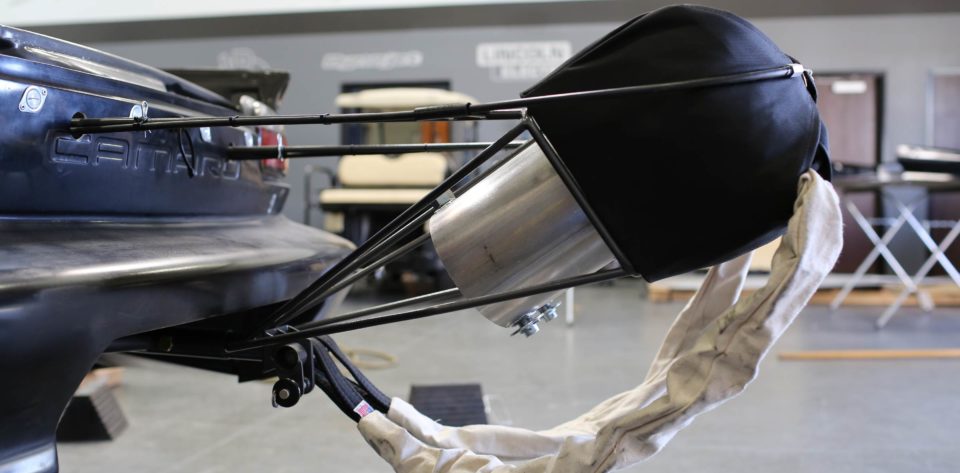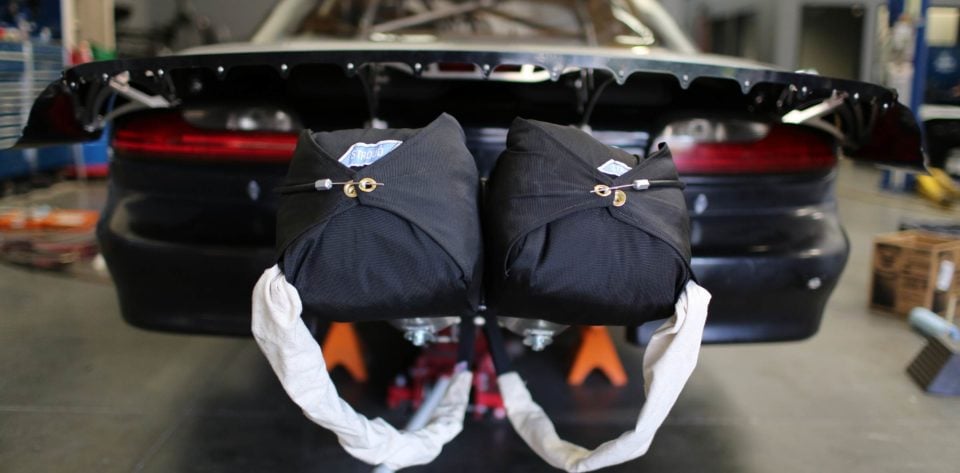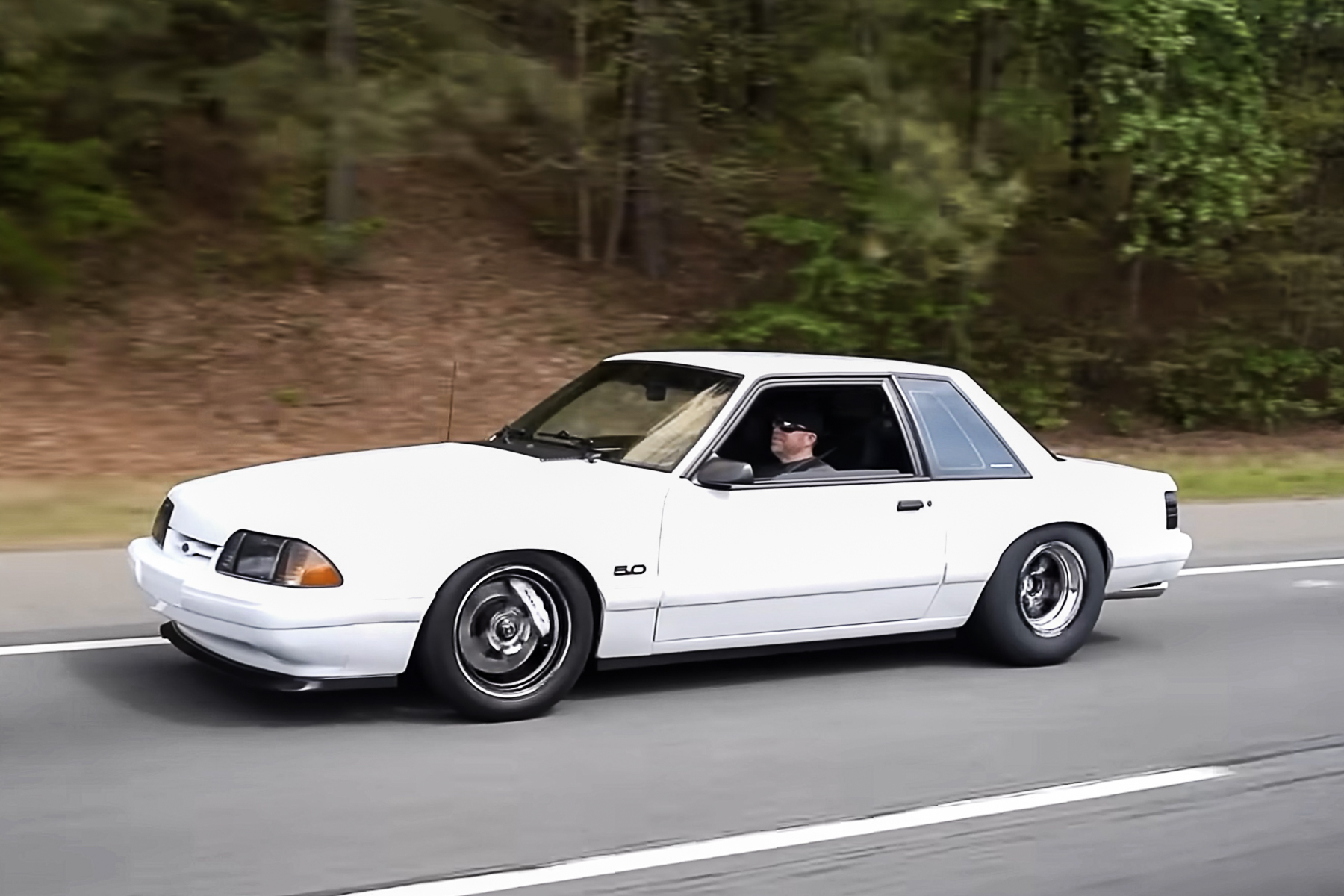For a racer who’s stepping up their game to run their drag car up over 150 mph, a parachute is an absolute necessity. Not only from a safety perspective, but if you’re planning on running at an NHRA or IHRA-sanctioned track, it’s a requirement to get through the tech process.
Our Project BlownZ Chevrolet Camaro ran last season with a single parachute, but over the off season we’ve performed a complete rebuild of the car. The new chassis, new engine, and a pile of other parts are designed to take us to new heights – and to the realm where a second parachute is a darned good idea if not a requirement – more on that later.
According to Stroud Safety‘s Bob Stroud, when choosing the proper parachute setup for your car, there are five main ‘things to know’, and the end result of that knowledge will have you stopping like the pros in no time.
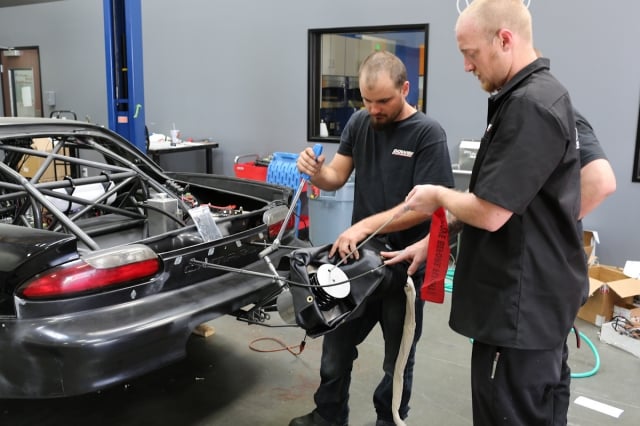
Thanks to our off season upgrades, Project BlownZ is now the recipient of a pair of brand-new mechanical-launcher Stroud parachutes.
The Basics
Stroud parachutes are designed to do one thing – bring your car down from warp speed, safely and efficiently. They are built to be user-friendly, pull straight and open softly to ensure complete control of the car under deceleration, and in the process provide the user with a safe racing experience.
Stroud parachutes are designed using a deployment bag, which stores the ‘chute while it’s packed inside the retention bag on the back of the car. The deployment bag takes the slack out of the shroud lines before the canopy opens, which makes the parachute more reliable and helps to stop the vehicle more quickly. The deployment bag also allows the parachute to be packed more quickly.
Stroud parachutes begin life as a gigantic ream of material, which is then cut and sewn into the correct dimensions by their team. Each section is cut from a pattern and then pieced together, one-by-one, until the final product is built.
Getting started with a parachute requires gaining experience with it, and that can only happen one way. “If you use it just once a weekend, even during a qualifier, several things are going to happen. First of all, you’re going to become comfortable with the parachute. Number two you’re going to learn what the parachute will do for you, number three you’ll learn what it won’t do for you, and number four, you’re going to become very comfortable with its reliability,” explains Stroud.
Until the parachute is fully inflated it doesn’t begin to slow the vehicle down, so Stroud suggests pulling the handle slightly before the finish line so that you effectively drive “into the chute” and it deploys at the highest speed of the run.
“The more we can get done in the first quarter of the shutdown area, it’s exponential how much more efficient the parachute is in the last three quarters of the shutdown. We want everything done as quickly as possible because we have more speed to work with. A parachute will not stop you in the event of a brake failure. A parachute will not stop you – it will slow you down and stabilize you, but it’s physically impossible for it to stop you, because the slower you go, the less efficient it is,” Bob Stroud explains.
The Proper Size
What's It Feel Like?
Deployment of a single Stroud ‘chute on a vehicle going through the traps at 150 mph will pull approximately 1 to 1.5 G’s, lower than other designs on the market due to the use of the deployment bag, which helps the opening sequence to be much more controlled.
You need to be prepared for the hit, as the parachute opening combined with the application of the brakes at the same time will be quite the shock if you’ve never experienced it before.
When choosing a parachute, there are a few things to take into account. The parachute needs to be the proper size for the vehicle in question, and to assist in this process, Stroud has developed a sizing guide that covers every automotive application they build.
However, as certain parachutes have been developed for particular classes and vehicle styles, they recommend that you call in and speak with one of their technicians before you purchase to ensure you get the right product.
In theory, the lighter the car and the slower the trap speed, the smaller physically the parachute will be as it’s required to slow down less mass at a slower speed. But that’s not exactly correct. The main difference, Stroud notes, is that the parachutes like the 400 series, that are built for smaller, lighter cars, do not have the same level of reinforcement or webbing as the parachutes in the 430 series that are designed for heavy door cars. The 430-series parachutes will work on the smaller, lighter cars, but they are overkill in those applications, and the 400-series ‘chutes are not designed to be used on the heavier cars in any event.
“None of those chutes on the single side are designed to be used as a pair. When you go into the dual parachutes, they are all the 430 class, but the sizes are different. Contrary to what you might think, the faster you go, the smaller the parachute is instead of it getting larger. We try to keep the G-loads the same on the driver, so we make the parachutes smaller for those quicker applications so you don’t kill yourself – we don’t want you to alter the wheelbase every time you pull the parachutes. Dual parachutes are run for stability reasons at higher speeds, to keep the back end of the car from floating around” says Stroud.
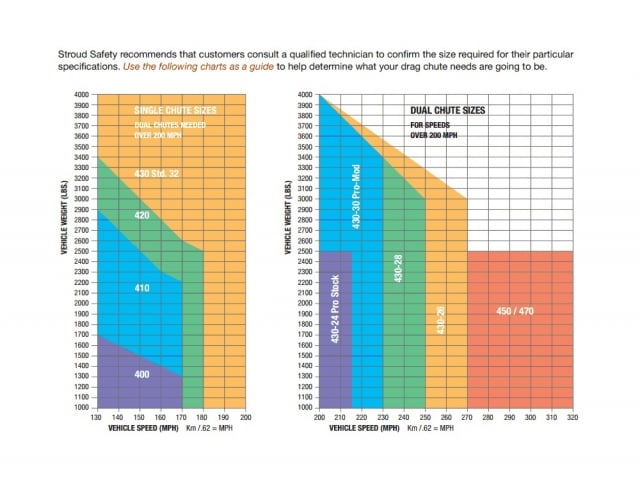
Each number in this graph corresponds to a Stroud part number to give an idea of which parachute you need. They recommend you speak with one of their technicians before purchasing to ensure you’re getting the right product for your car.
Available Systems
There are three types of launcher systems offered by Stroud – a pilot ‘chute/spring design, a mechanical spring-activated system, and an air launcher system that’s activated by CO2 pressure.
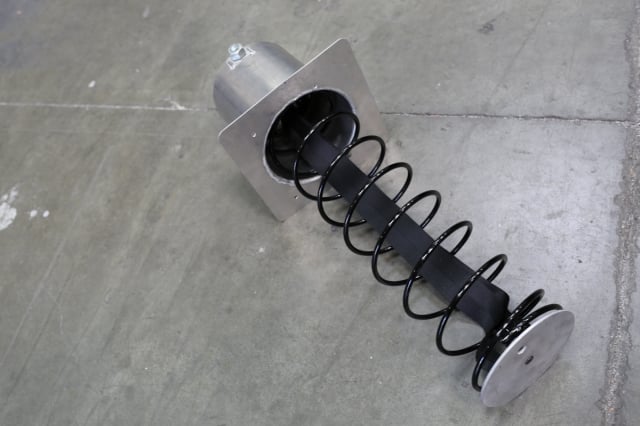
For BlownZ, we chose the mechanical launcher option. The spring is housed within the can at the top of the photo and is retracted with a wrench, whereupon a pin is inserted into the housing for retention while the parachute is packed.
The least expensive option uses a pilot chute/spring assembly that gets packed into the storage bag after the parachute is folded up and put into place. When the cable is pulled, the pilot ‘chute springs out of the pack, dragging the main canopy with it into the airstream for deployment. While this is great on a basic bracket car or slower door-car, it does present some challenges with packing, as you’ll often need a second set of hands to get the spring compressed.
The mechanical launcher system uses a large spring that is compressed into a storage can, through the use of a wrench and pin that holds the spring in place while the parachute is placed in the pack. The parachute is subsequently packed into the deployment bag, and then into the pack. The launcher system allows Stroud to remove the pilot chute from the equation, resulting in a more consistent launch, every time.
One of the advantages to using this type of system is that the end-user does not have to struggle to keep the spring depressed while also trying to get the parachute into the pack, and is one of the reasons the system can be loaded by one person in a matter of minutes – important when you’re trying to turn the car around between rounds. It’s deployed using a standard pull handle and cable.
(Left) A pin is inserted into the spring assembly prior to packing. (Left Middle, Right Middle) A ratchet is used to crank the spring down into its housing. (Right) Another pin is used to hold the spring in position while the 'chute is packed - this pin is removed when the process is complete to put the tension on the pack so it opens properly.
On the other hand, if your car has an onboard air system, you can make use of the air launcher system. This system does not use a spring, rather, there is a piston that pushes the parachute out of the pack the parachute when the button is activated. They even offer a carbon-fiber air launcher for those racers where weight is a major concern.
In any case where you are using a parachute on a vehicle equipped with wheelie bars, it is a requirement to use a net across the wheelie bars so that the parachute does not become tangled in the bars upon deployment; nobody wants to deal with the potential for an accident for something that’s preventable.
Parachute Packing Video
Proper System Mounting
Mounting the parachute system on the rear of the vehicle is a critical part of the installation. In order to ensure that the parachute ‘sees’ the air flowing over the rear of the vehicle properly, it should be mounted 45 degrees from horizontal, and up and behind the spoiler.
This is a very important note; if the ‘chute is mounted under the spoiler, it won’t see the proper amount of air for deployment and could fail to open when you need it most. In addition, the ideal anchor point is centered on the car (left to right) and should be at the center of the mass of the rear of the car. Stroud recommends somewhere through the crankshaft or camshaft centerline on a door car.
Care And Feeding
Taking care of your parachute properly is also very important to its lifespan. When using a parachute system, you should always deploy it at least once per outing, even if the track has a generous shutdown and you don’t really need it at that facility.
Contrary to what you might think, the faster you go, the smaller the parachute is. – Bob Stroud
Over time, the parachute becomes compressed within the pack and can fail to deploy properly, even though the spring or air launcher has been activated. In addition, making it a regular practice to activate the ‘chute will allow you to learn the car’s tendencies when it’s activated – it’s a good thing to have no surprises at 150-plus mph.
Once you’re done at each race, the parachute should be removed from the car and placed into a container where it can breathe, so that no moisture accumulates within the material. It needs to be stored in a dry location, and they also recommend repacking the parachute at the track, not at home. This way, you ensure that the parachute is freshly packed and will work when it’s needed.
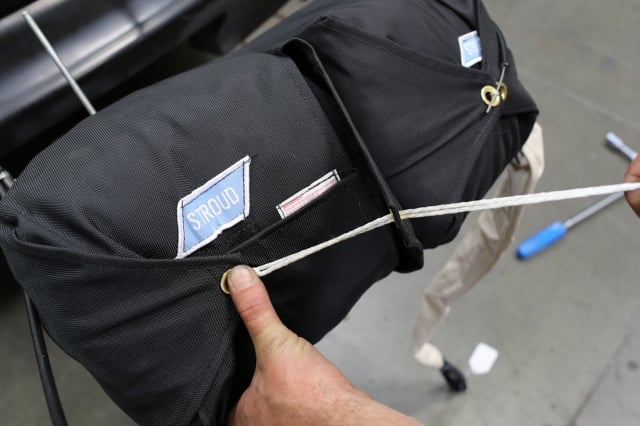
Note when packing the parachute, the flap opposite the flap opposite the ripcord is the last to be loaded into the assembly. This allows the cord to pull against the loop instead of in the same direction.
“We would solve half our parachute issues if guys would take them out and re-pack them before the next race. Not only does it settle in the bag and get stuck, it extends out and won’t deploy properly. The harder you compress one of these parachutes, the harder it makes it to come out of the pack,” says Stroud.
The parachute can be subject to rot if it stays packed all the time. There are two ways to keep it clean – wash it with a 50/50 mixture of soap and Castrol Super Clean, or it can be washed in a regular washer on the cold/delicate cycle. Regardless of how you wash it, it must be air-dried. Try to keep it out of the sun as much as possible – the material can deteriorate otherwise.
(Left) Our parachutes are installed at the recommended 45-degree angle to help them deploy up into the airstream. (Right) We also built a mount to make sure the 'chutes are up and out from under the spoiler in addition to separating them slightly for ease of packing while at the track.
In Conclusion
The use of a parachute is a requirement for your safety – it will help you to bring your car to a controlled stop with a minimum of muss and fuss, when you follow the guidelines for its proper use. Stroud Safety has put years of continuous development and product refinements into ensuring their products do exactly that, so rely on their expertise and engineering skill to keep you pointed in the right direction. And bring you to a safe halt.



